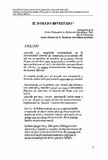Mostrar el registro sencillo del ítem
El Dorado Revisitado
| dc.rights.license | http://creativecommons.org/licenses/by-nc-sa/3.0/ve/ | es_VE |
| dc.contributor.author | Alès, Catherine | |
| dc.contributor.author | Pouyilao, Michel | |
| dc.date.accessioned | 2022-06-02T14:16:42Z | |
| dc.date.available | 2022-06-02T14:16:42Z | |
| dc.date.issued | 22-06-02 | |
| dc.identifier.issn | 1325-2610 | es |
| dc.identifier.uri | http://www.saber.ula.ve/handle/123456789/48110 | |
| dc.description.abstract | Durante todo el siglo XVI, desde los Andes hasta las Guayanas, las tierras interiores del continente austral son el teatro de expediciones tan vanas como peligrosas, a la búsqueda del "País del Oro", llegando a ser a través del tiempo el refugio incierto de un legendario emperador"dorado". El mito del Dorado, que hoy se perpetúa bajo diversas formas, se analiza aquí en función de la historia de las ideas, del avance de las cartografías y el estudio literario de sus geografías imaginarias. Efectivamente, hasta siglo XIX, los cartógrafos, cuyas intenciones no siempre estaban desprovistasde interés geopolítico, sitúan un inmenso lago en el espacio inexplorado entre el Orinoco y el Amazonas, el Parime Lacus, sobre cuyas orillas se levanta Manoa, una fabulosa ciudad de muros de oro. Trás caer en desuso, durante el siglo de las luces y sobre todo en la época de la exploración científica, las geografías fantásticas del dorado vuelven a parecer en obras que pertenecen al género utópico o al "realismo mágico" ibérico americano. Estas geografías ficticias, imaginadas por Voltarine, Conan Doyle o Carpentier, construyen un territorio en el que se convierten los signos y donde puede expresarse la lógica de un rito de pasaje.Ciertamente, una vez resuelto el enigma de la comunicación entre la cuenca del Orinoco y la del Amazonas con el reconocimiento del Casiquiare, todavía permanecen -y esto nos conduce a la segunda mitad del siglo XX- desconocidas las fuentes del Orinoco y la última tierra incognita del macizo guayanés,el área interfluvial en el que se bifurcan las aguas. | es_VE |
| dc.language.iso | es | es_VE |
| dc.rights | info:eu-repo/semantics/openAccess | es_VE |
| dc.subject | El Dorado | es_VE |
| dc.subject | Geografías imaginarias | es_VE |
| dc.subject | Lago parime | es_VE |
| dc.title | El Dorado Revisitado | es_VE |
| dc.title.alternative | El Dorado Revisited | es_VE |
| dc.type | info:eu-repo/semantics/article | es_VE |
| dc.description.abstract1 | Throughout the 16th century, from the Andes to the Guianas, the interior lands of the southern continent were the theater of expeditions as vain as they were dangerous, in search of the "Country of Gold", becoming over time the uncertain refuge of a legendary "golden" emperor. The myth of El Dorado, which is perpetuated today in various forms, is analyzed here based on the history of ideas, the progress of cartography and the literary study of its imaginary geographies. Indeed, until the 19th century, cartographers, whose intentions were not always devoid of geopolitical interest, they place an immense lake in the unexplored space between the Orinoco and the Amazon, the Parime Lacus, on whose shores Manoa rises, a fabulous city with walls of gold. after falling into disrepair, during the Age of Enlightenment and especially in the era of scientific exploration, theThe fantastic geographical features of El Dorado appear again in works that belong to the utopian genre or Iberian-American "magical realism". These fictional geographies, imagined by Voltarine, Conan Doyle or Carpentier, build a territory in which signs become and where the logic ofa rite of passage can be expressed.Certainly, once the enigma of the communication between the Orinoco Basin and the Amazon Basin was solved with the recognition of the casiquiare, the sources of the Orinoco and the last terra incognita still remain -and this leads us to the second half of the 20th century- unknown of the Guiana massif, the interfluvial area in which the waters fork. | es_VE |
| dc.description.colacion | 5-54 | es_VE |
| dc.description.dependencia | Museo Arqueológico “Gonzalo Rincón Gutiérrez” | es |
| dc.description.email | catherine.ales@ehess.fr | es_VE |
| dc.description.email | museogrg@ula.ve | es_VE |
| dc.description.frecuencia | Cuatrimestral | es |
| dc.description.paginaweb | www.saber.ula.ve/boletin_antropologico | es |
| dc.identifier.depositolegal | P.P 82-0186 | es |
| dc.publisher.pais | Venezuela | es_VE |
| dc.subject.institucion | Universidad de Los Andes | es_VE |
| dc.subject.keywords | El dorado | es_VE |
| dc.subject.keywords | parime | es_VE |
| dc.subject.keywords | imaginary geographies | es_VE |
| dc.subject.seccion | Boletín Antropológico: Artículo | es_VE |
| dc.subject.tipo | Revistas | es_VE |
| dc.type.media | Texto | es_VE |
Ficheros en el ítem
Este ítem aparece en la(s) siguiente(s) colección(ones)
-
Boletín Antropológico - Num 033 - Vol 1
enero - abril 1995


